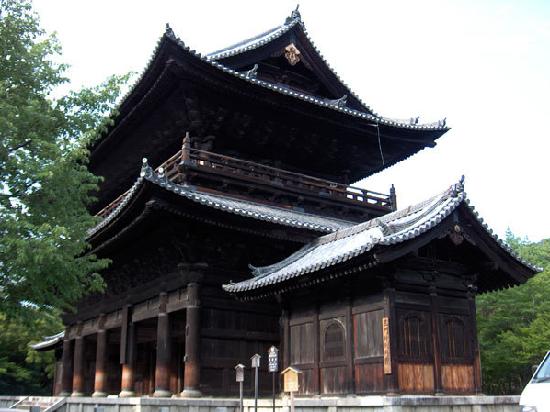 |
| The Sanmon Gate, Nanzen-ji |
Nanzen-ji is a Zen temple founded in 1291 by Emperor Kameyama, initially as a retirement villa, similar to Kinkaku-ji and Ginkaku-ji. By his request, it was converted to a Zen temple. When the Ashikaga Shogunate instated the Five Great Zen Temples of Kyoto, this temple was not included among them, but rather stood in a class of its own, above both the temples in Kyoto and Kamakura, gaining the title of "First Temple of the Land." It played a role in supervising the other Zen temples, and demonstrates the role of religion in government in the Muromachi period.
Tourists are free to visit the temple grounds free of charge, but separate fees do apply for entering the temples and subtemples. While there are many sites to see in Nanzen-ji, there is one odd sight that visitors will come across outside the Hojo (the former head priest’s residence and Nanzen-ji’s main hall): a large brick aqueduct that passes through the grounds. This aqueduct was built during the Meiji Period as part of a canal system designed to carry water and goods between Kyoto and Lake Biwa in the neighbouring Shiga Prefecture.
Websites: http://www.sacred-destinations.com/japan/kyoto-nanzenji.htm, http://www.japan-guide.com/e/e3905.html
View Larger Map
BACK TO HISTORICAL PLACES TO VISIT INDEX
Comment on what you could learn related to what you have studied about Edo and Meiji Japan.
Comment on what you could learn related to what you have studied about Edo and Meiji Japan.



